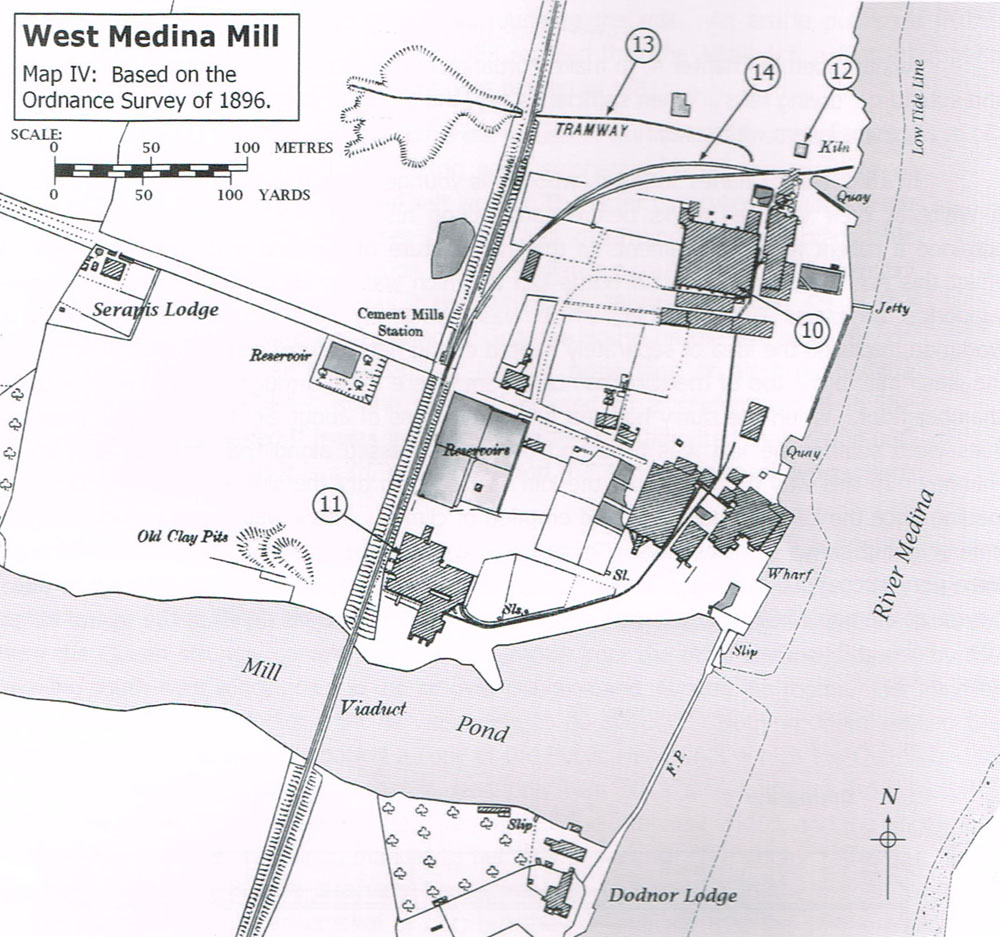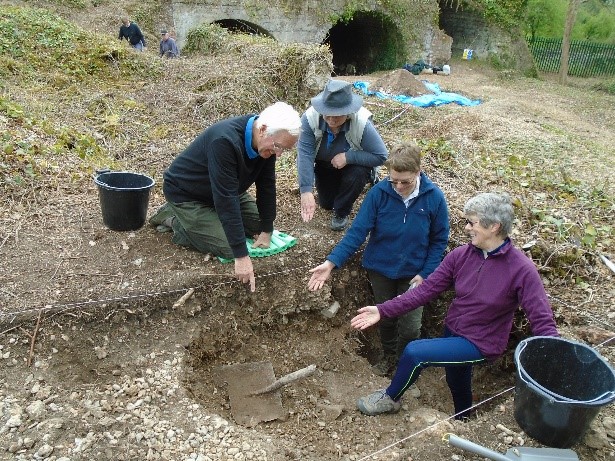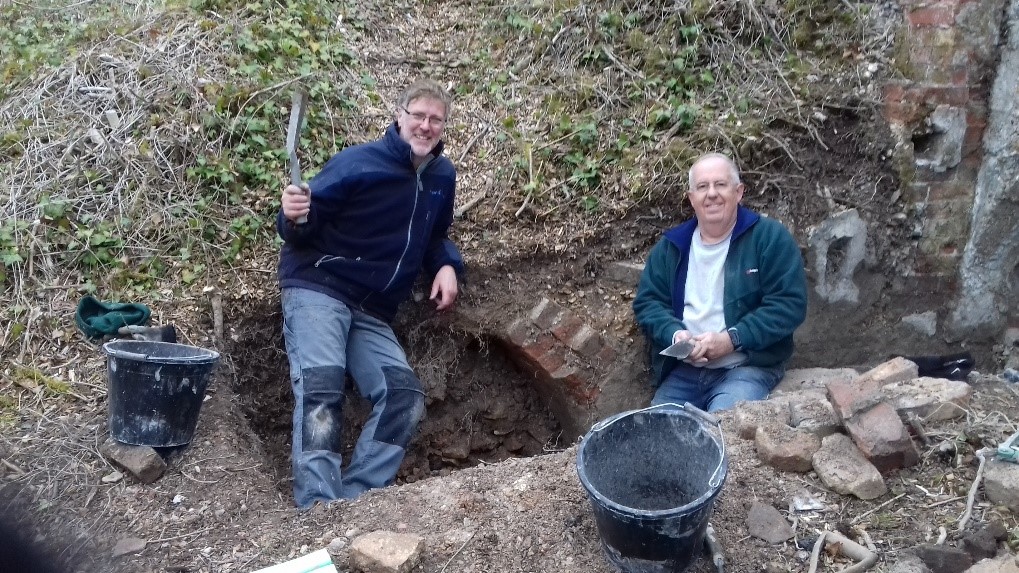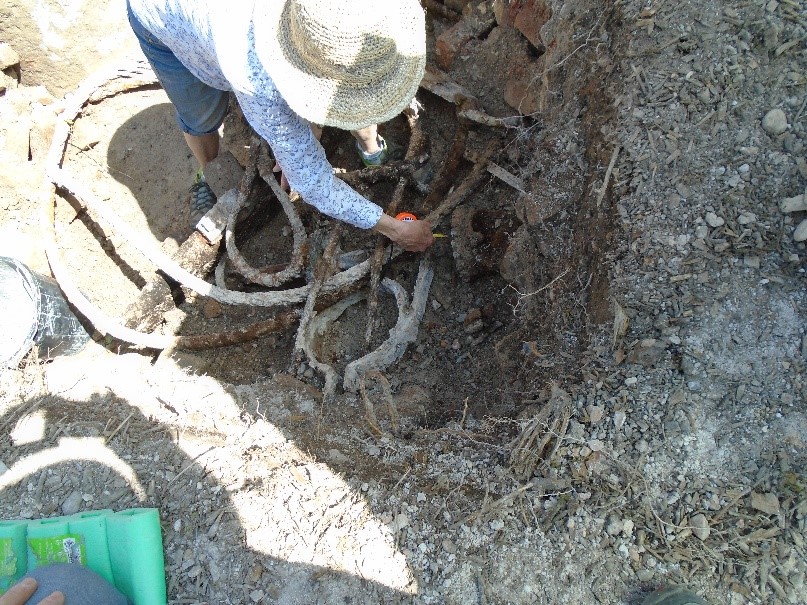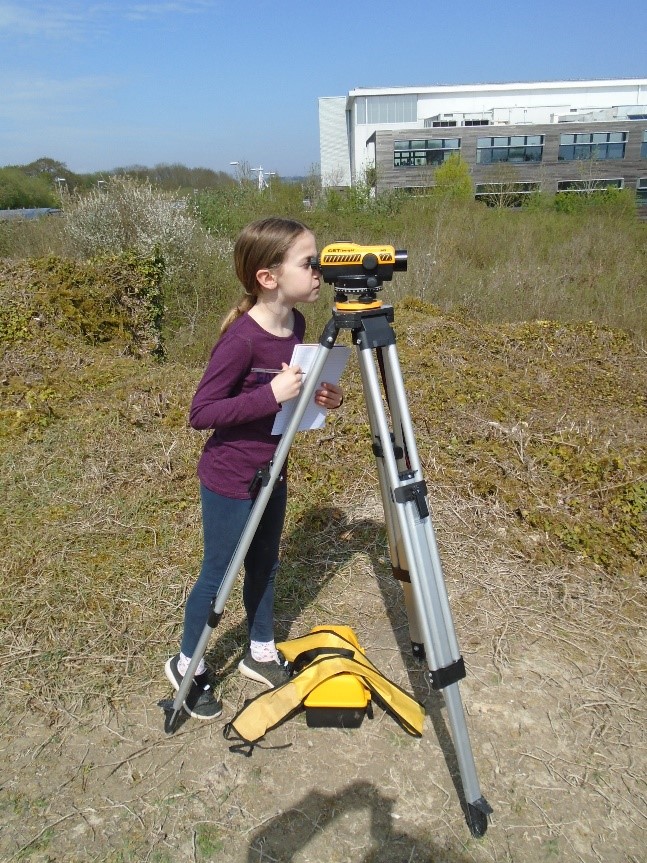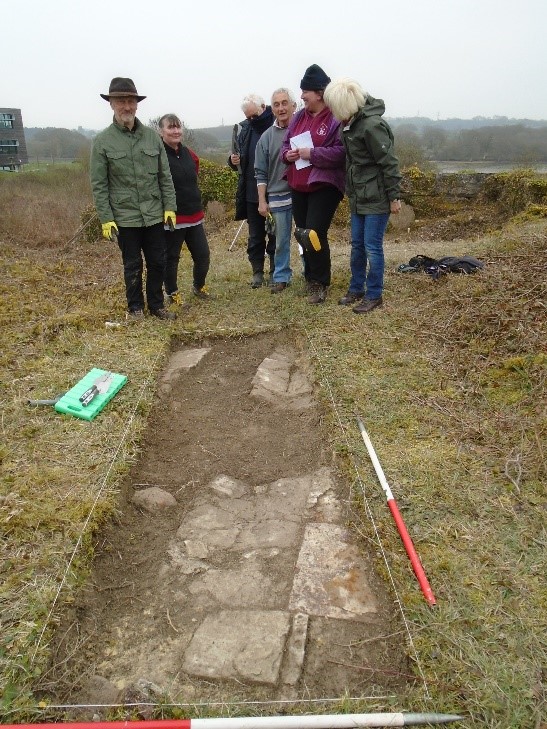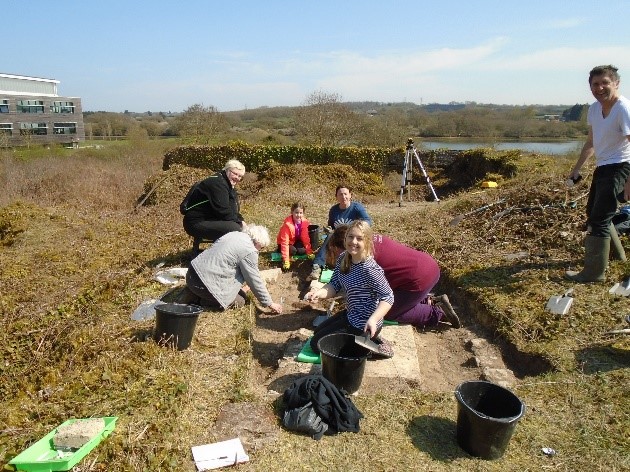The Rediscovered Cement Kilns
Set apart from the main West Medina Mills site, some of the cement kiln structures used by Charles Francis and Sons have survived to the present day. Heavily overgrown for many years, the structures were used by local children as a playground known as “Found Out” or the Mummies Caves.
First revealed when local contractors Groundsells cleared the site as part of the HLF funded project in November of 2017, the cement kilns surprised many people passing by on the Cowes to Newport cycle track as the statement “I never knew that was there” was heard so many times during each day on site.
Our site occupied a small corner of the much larger West Medina Mills site which made cement between the 1840s and 1940s. Because the structures were not present on the 1866 OS maps, but can be seen on the 1898 maps, we think that they were not built until at least after 1862, the year that the site was surveyed for the 1st edition OS maps.
After archaeological training held during the winter months, our volunteers began to excavate to try and understand more about the last surviving Victorian Cement kilns. When we first arrived on site we though that there were 3 Bottle kilns (the earliest structures used to fire cement) and two later Chamber Kilns, but our volunteer excavators were to discover things that changed our understanding of the whole site.
Our volunteers discovered that there had originally been 6 bottle kilns erected in an east to west line on the site. The most westerly kiln was excavated to show the depth of the kiln pot in which layers of coke and dried slurry (a mixture of crushed chalk, clay and water) were fired and the opening through which the fired clinker was raked out and put into wagons to be taken to the main site and crushed to produce cement powder.
We also found the remains of a shovel left behind by the cement workers inside the kiln pot itself, perhaps thrown in by a disgruntled digger when it broke:
By discovering the fourth bottle kiln, Simon and Andrew’s discovery led us to realise that there had originally been 6 Bottle Kilns in a row on the site:
Trench 4 not only revealed the front of the Bottle Kiln but also contained some winch and lifting equipment used to haul the raw materials to the top of the Bottle Kiln:
Volunteers also recorded everything they found using archaeological techniques to produce a drawn, written and photographic record of everything they uncovered.
We discovered that the earlier of the two Chamber Kilns on the site had probably been built, when Chamber Kilns were just being invented, by building a concrete Chamber onto the southern face of the two eastern-most Bottle Kilns. This Chamber is orientated North to South which is not the usual practice and caused the raking out holes to be inside one the tunnels holding the drying floor up.

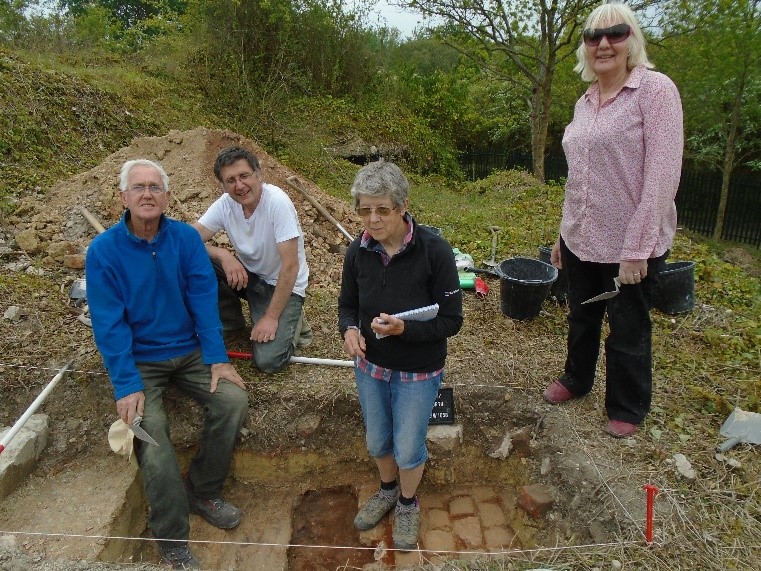
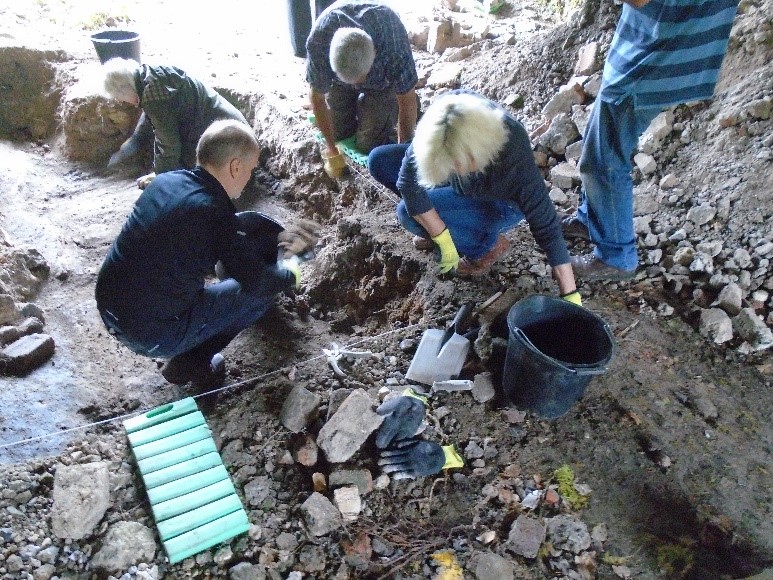
The later Chamber Kiln was built on the more usual north to south orientation to make use of the prevailing winds. The Kiln pots were enormous and the drying floor on top of the arches was very complicated, with a series of voids between brick walls through which the hot gases from the Kiln pot passed and dried the slurry as it sat on slabs above the voids. We think that this Chamber Kiln was built around c. 1875.

The Community Excavation of this site under the management of Gift to Nature and carried out due the generosity of National Lottery players through the Heritage Lottery Fund has changed the knowledge of the structures on this important part of the Island’s Industrial Archaeological heritage as well as successfully involving local people in the investigation of their own local heritage. Want to know more? The Non Technical Report can be read here.



